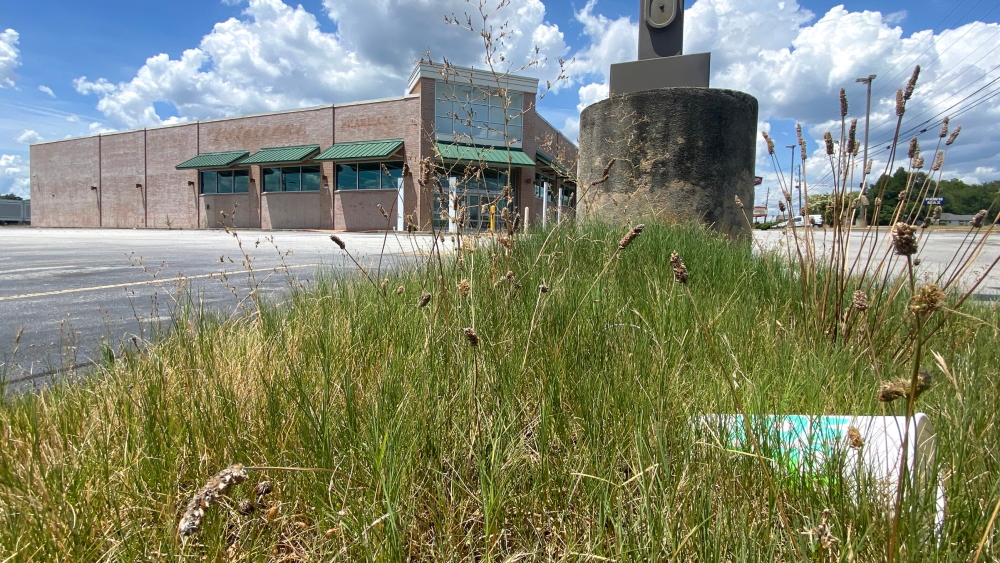MACON, Georgia — Carl Fambro says Macon’s West Macon neighborhood has been left behind. Anchor businesses at its shopping centers — like Home Depot and the Burlington Coat Factory — have moved down the road. The few gyms and youth recreation centers that are still open have irregular hours. Several churches have left.
In 2009, Fambro moved his business, Francar’s Wings, from a spot on Log Cabin Drive to Mercer Village, a retail and restaurant district. The restaurant stopped delivering to the old neighborhood when one of its drivers was threatened during a delivery run.
“I gotta watch out for my folks,” he said.
But Fambro knew leaving wouldn’t fix West Macon’s problems. Last year, he got a small grant to fund Peace in the Village, a community-generated action plan to address the neighborhood’s most pressing crime and violence issues.
“We can't come here, but we can't just let this lie like it is,” he said.
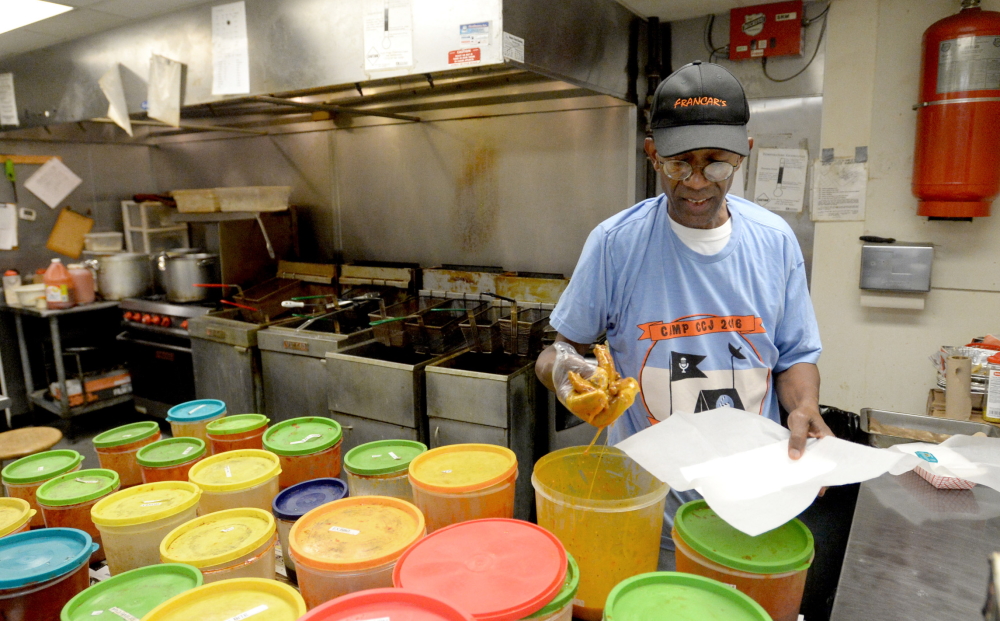
Jason Vorhees
Owner Carl Fambro makes a sample of Mercer Gold wings at Francar's Buffalo Wings on Sept. 26, 2019.
For nearly a century, Macon has had a reputation for extraordinary levels of violence, and for decades, the city’s violent crime rate has consistently exceeded state and national rates. In 2019, Bibb County’s rate of per capita shootings was almost as high as Chicago’s. Macon’s murder rate in the first half of 2020 was one of the highest on record.
It’s not just individual neighborhoods that suffer the downstream effects of violence.
“We've lost our character and image because everybody says Macon is a dangerous place to be, Macon's a terrible place to live,” said Bibb County Sheriff David Davis, adding that due to those perceptions, “people may not want to live here. Businesses ... decide not to locate here. People who are here and have the means to leave — [they] leave. And then that makes our community much, much poorer and less diverse.”
Violence costs cities more than just the lives of its residents; it also costs cities money. The financial toll of violence shows up in the immediate health care and criminal justice costs of the aftermath, but it is also evident in lost income over the longer term, as individuals and businesses — like Fambro’s — divest from communities suffering high levels of violence.
Mounting evidence suggests violence is so financially costly that for cities looking to increase their budgets, reducing violence may be a powerful way to save dollars.
Financial arguments not the opposite of moral ones
Although economists have been examining the cost of violence for decades, several recent efforts have yielded some estimates of the potential savings to taxpayers that even small reductions in urban violence could produce — often in the range of millions of dollars per homicide.
“Basically, anything you do to address urban gun violence pays for itself many times over, even if it's only moderately effective — even if it's expensive, because the cost of a single homicide is so expensive,” wrote Thomas Abt in an email.
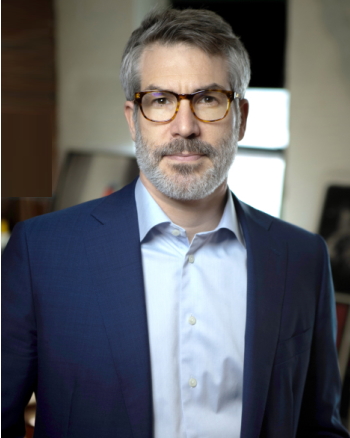
Basic Books
Thomas Abt
Abt is a senior fellow at the Council on Criminal Justice and author of the book “Bleeding Out: The Devastating Consequences of Urban Violence — and a Bold New Plan for Peace in the Streets.”
Several organizations working to reduce urban violence have made a financial case for their work. Among them is Cure Violence, a violence prevention program rooted in a street outreach approach, that has demonstrated dramatic reductions in violence in 25 U.S. cities and 15 countries: a 56% reduction in killings in Baltimore; a 63% reduction in shootings in the South Bronx; 100% reductions in retaliation homicides in five of eight Chicago communities.
The program, which originated in Chicago, aims to reduce violence by approaching it as a communicable disease: In the immediate aftermath of a shooting, trained violence interrupters and outreach workers work in the community and at hospitals to prevent the spiral of retaliatory violence that often follows. They also connect the highest-risk community members with services and support, and work to change community norms.
The organization has published estimates suggesting every dollar spent on the program reduces medical and criminal justice costs by nearly $16. But increasingly, activists and city administrators are realizing that the true savings of violence prevention are likely even higher — and that the financial case for implementing violence prevention programs may be the most compelling one to some stakeholders.
Still, funding violence prevention often runs up against the “wrong-pockets problem,” said Abt — the question of whether the city official who makes a violence prevention decision is still in office to enjoy the windfall that decision yields many years down the road.
“That's very hard to figure out, and so the idea that you can change a particular policymaker’s behavior is much harder because they may not see those savings,” he said.
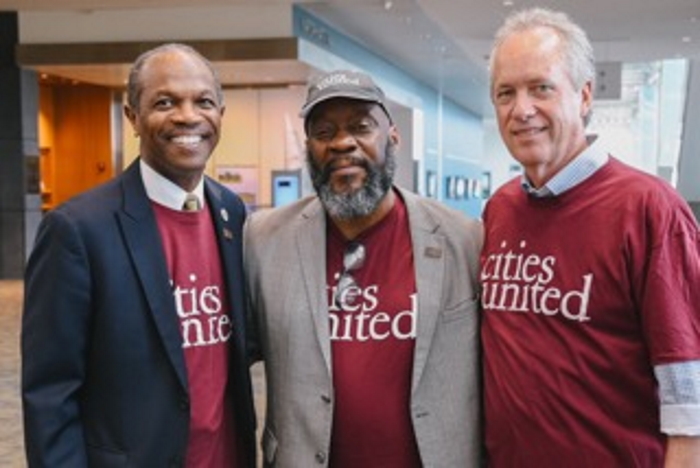
Jason Vorhees
Cities United Executive Director Anthony Smith (center) says there’s an obvious moral argument for violence prevention but financial arguments are not their opposite. He was with Hampton, Virginia, Mayor Donnie Tuck (left) and Louisville, Kentucky, Mayor Greg Fischer at the organization’s 6th Annual Convening in August 2019.
Violence prevention is often presented as “the right thing to do” without also being presented as the financially responsible thing to do, said Anthony Smith. He is the executive director of Cities United, a nonprofit organization that helps cities comprehensively prevent violence by supporting violence prevention programs (like Cure Violence and others) and facilitating longer-term work to change their systems.
There is an obvious moral argument for violence prevention, said Smith — but financial arguments are not their opposite. They’re just easier to sell to those who “might see it as a moral thing, but they don't move in a way that they would move if it were the economic and bottom line,” he said.
Pricing out gun violence
City administrators need to know how much violence costs to determine how much money violence prevention saves. The great majority of violent crime in the U.S. involves guns — and in any city, a cascade of events follows a shooting, beginning at the scene of the crime. Police, fire department and emergency medical services respond to the scene, and a police investigation takes place.
Once evidence is gathered, a specialized company conducts a cleanup of the crime scene. Gunshot victims are stabilized in trauma centers and often undergo surgery, inpatient hospital care and stay in rehabilitation centers.
Meanwhile, the case against the alleged perpetrator of a shooting moves through the criminal justice system, which usually includes prosecution by the district attorney and defense by the public defender and a court process. During this process — and afterward, if a guilty verdict is handed down — the alleged perpetrator is incarcerated in a county or city jail, then in state prison.
In the case of a homicide, gunshot victims may be autopsied and must be buried, and their surviving loved ones may require bereavement support and additional financial support if the victim was the household’s main breadwinner. Surviving gunshot victims are often temporarily or permanently disabled and unable to return to work. In the case of incarceration of the alleged perpetrator and/or death of the victim, neither will pay income or sales tax.
Each of these points in the cascade costs money — but exactly how much? In 2018, the National Institute for Criminal Justice Reform (NICJR) tried to answer that question in a series of studies of the cost per shooting in six U.S. cities. The lowest cost for a fatal shooting was in Mobile, Alabama ($765,000) and the highest was in Stockton, California ($2.5 million).
The estimated costs were for shootings involving one suspect, and often nearly doubled when two suspects were involved. The biggest costs — which were likely to also affect state budgets — came from incarceration, which at minimum cost more than four times any other sector did.
The cost to prevent one homicide is about $30,000, Abt estimates, in the context of a city’s rollout of a combination of focused violence prevention efforts. Using that figure, the return on a violence prevention investment in Mobile would be nearly 26-fold; Stockton’s investment would return $83 for each dollar spent. Even with prison placement costs removed, the return on investment would be substantial: nine-fold in Mobile and 16-fold in Stockton.
The savings of lowering violence
In a 2012 report, the Center for American Progress (CAP) presented estimates of the costs of violent crime to eight U.S. cities. In addition to many of the costs later counted in the NICJR studies, the CAP report tried to quantify the intangible costs of survivors’ pain and suffering.
It also presented an analysis of the savings each city could expect if its violent crime rates decreased by either 10% or 25%. These savings included lower spending on police departments and courts and higher revenues from income earned by people who otherwise would have been crime victims or perpetrators.
But it was another source of savings that dominated a potential lower-crime landscape: housing values. The report found that homicides had a remarkable influence on the cost of housing in the neighborhoods where they took place: On average, reducing homicides in one ZIP code in one year yielded a 1.5% increase in housing values in that ZIP code the following year. The results were robust and consistent across the metropolitan areas of all eight cities.
When housing values increase, the property tax revenues assessed also eventually rise. Over time, higher-valued housing stock leads to increased home sales, permitting and construction costs, all of which add dollars to city coffers. In turn, these changes draw business investment in neighborhoods, presenting additional sources of tax revenue.
The CAP report did not go so far as to project financial gains from the downstream effects of increasing housing values, nor to estimate the dollar value of increases in property tax revenue — it only projected cities’ expected total increase in the value of its housing stock with a 10% reduction in homicides. That increase ranged from $600 million in Jacksonville, Florida to $4.4 billion in Boston.
The NICJR studies did not consider lost property revenues among their costs. But in 2019, the city of Philadelphia did: After a year in which the city saw more homicides than in a decade, the office of its controller published a report that focused on the financial losses the city has sustained due to homicides, particularly on lost property value and tax revenue.
Philadelphia Controller Rebecca Rhynhart has seen other worthwhile projects go unfunded because cities argue they cannot afford them. “What I wanted to show,” she said, “is that there really isn't an argument to be made that we don't have the resources to fight this.”
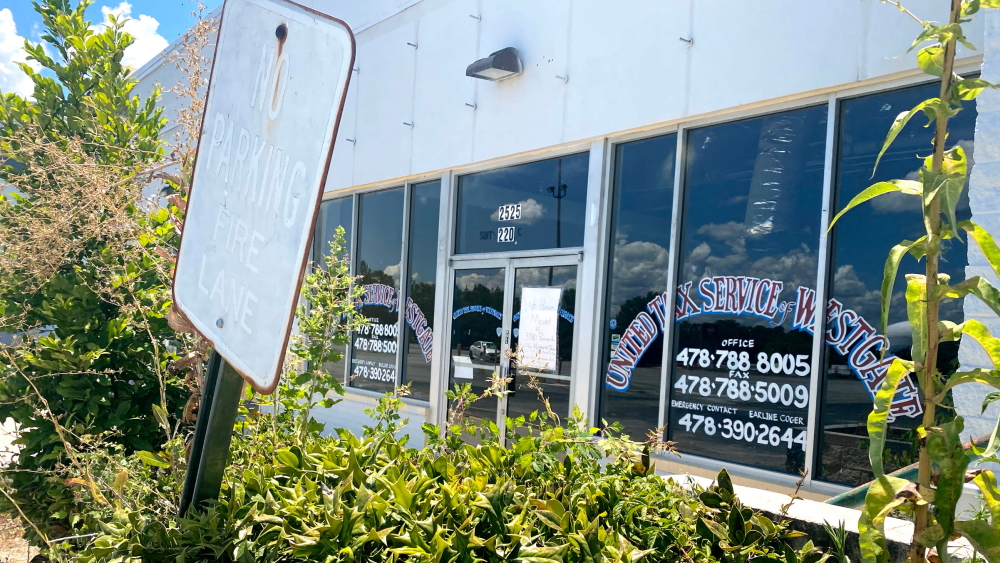
Jason Vorhees
Former location of United Tax Service at the Westgate Shopping Center.
The report centered on the link the CAP report had identified between neighborhood safety and home value. Philadelphia found that on average, eliminating one homicide would lead to a 2.3% increase in sale prices in the immediate neighborhood. According to the authors’ projections, reducing homicides by 10% in a single year would cost $10.5 million and yield a $13 million increase in property tax revenue. Over five years, the compounding effect of taxing an increasingly valuable home would bump the increased revenue to $114 million and the costs to $43 million — more than a 2.5-fold return on each dollar.
Did the eight cities in the 2012 CAP report implement violence prevention efforts in response to the study? Smith of Cities United doesn't know. Such programs have been introduced in some of those cities since the report came out (Philadelphia and Boston, for instance), but it's not clear that was in response to the report.
Leaders in other cities may also be increasingly aware of the financial benefits of violence prevention. In a Chicago Sun-Times editorial last October, several city aldermen wrote that if Chicago rededicated to violence prevention just a fraction of the $3.5 billion it spends annually to cope with the downstream effects of gun violence, “we could save taxpayers billions of dollars every year.”
Funding can be a barrier — but it’s not the only one
What does it actually take for a city to sustainably reduce violence? When Cities United helps a city try to achieve that goal, it starts with the mayors, Smith said. They choose a team of program champions from among their staff and the community. After a weeklong training at the organization’s Louisville, Kentucky, headquarters, that team starts down a path toward implementing a violence prevention program.
The biggest obstacles they face are not where you might expect them: Law enforcement officials are usually receptive to violence prevention programs, Smith said.
“You hear over and over again, ‘We can't arrest our way out of this,’” he said.
It’s when the budget conversation starts that things get a little tricky.
“The first thing that people go to is, ‘Are you taking dollars away?’” he said.
And sometimes, to make sure enough is invested up front to help a violence prevention program be effective, money may indeed come out of the budget of a police department or another city line item. Smith tries to reframe the conversation around how violence prevention will help law enforcement meet its own goals, and the value of working in partnership: “It’s an add-on in the long term that makes everybody’s job easier.”
It’s not just law enforcement who pushes back on this change in paradigm: “Community members who don't understand and who actually already feel safe because of law enforcement feel like they’re losing something, too,” Smith said. Elected officials seeking to appear “tough on crime” sometimes can’t see a path toward that image that includes violence prevention.
Although recent outcry against police abuses has led to rising national interest in community-based alternatives to law enforcement, pandemic-related cuts to Macon’s budget probably translate to a low appetite for implementing new programs in the area, said Fred Ammons, CEO of Community Health Works, a nonprofit organization focused on improving Georgians’ health outcomes. “The impact of the pandemic on municipal and state revenues will likely inhibit any upfront investments in new programs, even public health approaches to violence prevention,” he wrote in an email.
Smith pushes city officials to fund violence prevention programs fully and for the long term, as discontinuous or inadequate funding for these programs can cause real damage — not only to these programs’ credibility, but to the people at the heart of their work. Over the 20-year lifespan of Cure Violence, funding for the program's Chicago sites has lapsed three times. Each lapse has been associated with striking increases in violence in the neighborhoods served by those sites.
Smith said he is often frustrated that the halfhearted funding of violence prevention programs results in incomplete “professionalization” of the people who put their lives on the line to do the street-level work: Outreach workers and violence interrupters usually work part time and without benefits, he said, including mental health support and clear pathways for advancement. Inadequate support raises their risk for returning to illegal activities just to make ends meet, he said.
In communities where violence has been the norm for years, violence prevention programs alone are not enough to create durable change. For that reason, the second prong of Cities United’s approach is to ask mayors to think long term about what public safety really means.
“It’s not about jails, law enforcement and detention centers, but it really is about access to quality education, access to affordable housing, opportunities to make a living wage,” Smith said. “We want to reduce homicides, but we also want to make sure that the folks that we’re keeping alive have reason to be alive, right?”
Sheriff Davis agrees. In Macon’s worst-affected neighborhoods, concentrated poverty, low educational and employment opportunity, and blight layer on to create deep despair that cannot be solved with just one social program. “Until there is movement on some of the more basic inadequacies, we're still gonna see some of this violence,” he said.
The message Smith sees in analyses like the one Philadelphia conducted is clear: “We need to pay this upfront because of what it saves us in the long run,” he said — and not just in the number of lives saved. “The bigger picture for most of the folks that you try to make the financial case to is, ‘What does the city gain in the end?’”
Twenty-seven people attended the first meeting Fambro convened in late February. The number was smaller than he’d hoped for, but large enough to produce a list of 10 community concerns — gun and youth violence were numbers one and two. The group also produced an action plan to address blight and the vacuum of youth recreation options in the area. But in the weeks following, the first waves of Georgia’s coronavirus pandemic began to rise, bringing plans for basketball tournaments, block parties and neighborhood outreach campaigns to a screeching halt.
For now, at least one of the items on the action plan is still in play: a socially distanced youth class in mobile app and website design led by instructors from Central Georgia Technical College. The plan is to hold the class at a locally accessible library, and the goal, said Fambro, is to show kids a pathway to education and professions in information technology.
“That is still on the hook,” he said. “Somehow, we’ve got to make that happen.”
This is a collaboration between the Center for Sustainable Journalism, which publishes Youth Today and the Juvenile Justice Information Exchange, and the Macon Telegraph. It’s part of the Center’s national project on targeting gun violence. Support is provided by The Kendeda Fund. The Center is solely responsible for the content and maintains editorial independence.
